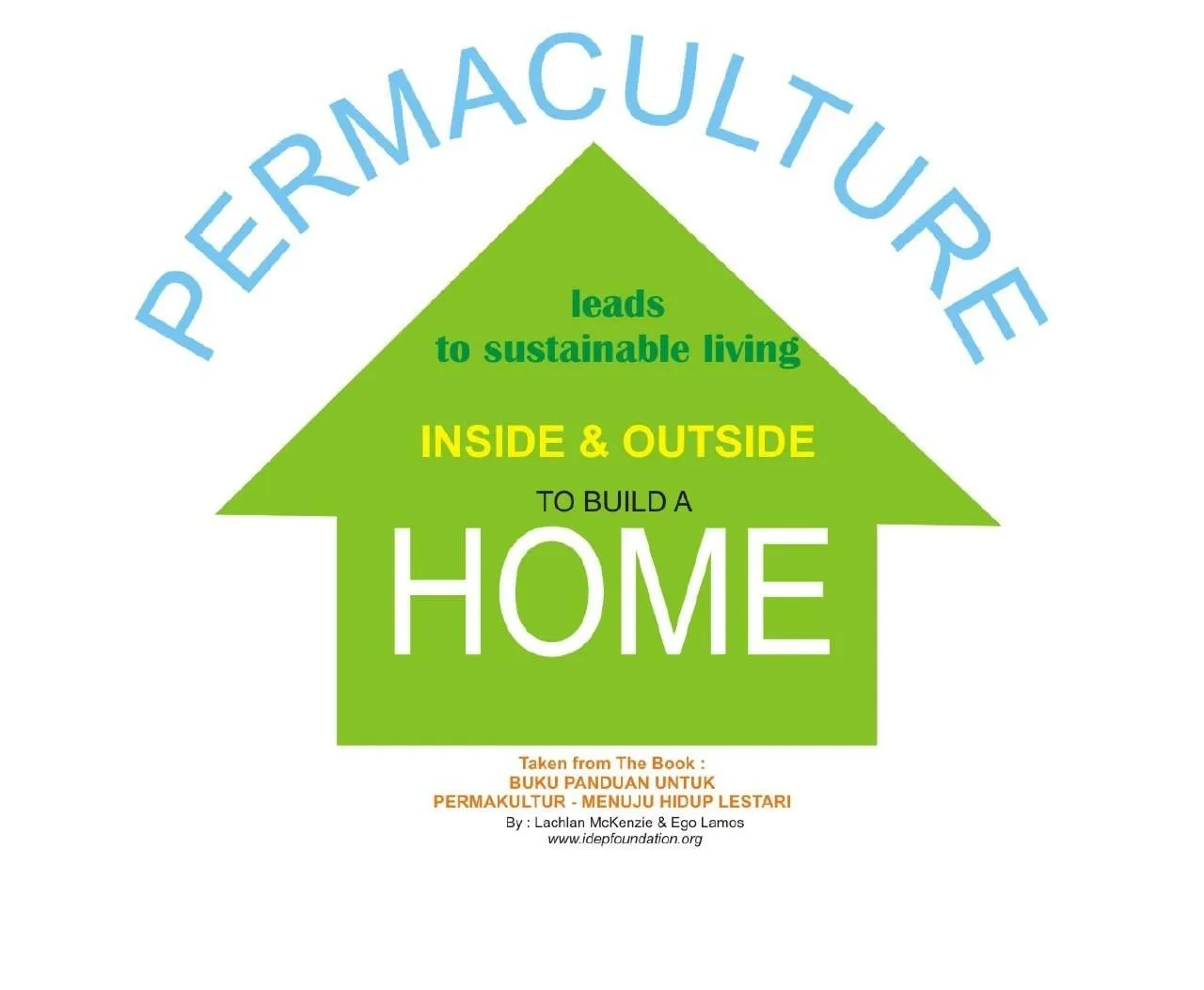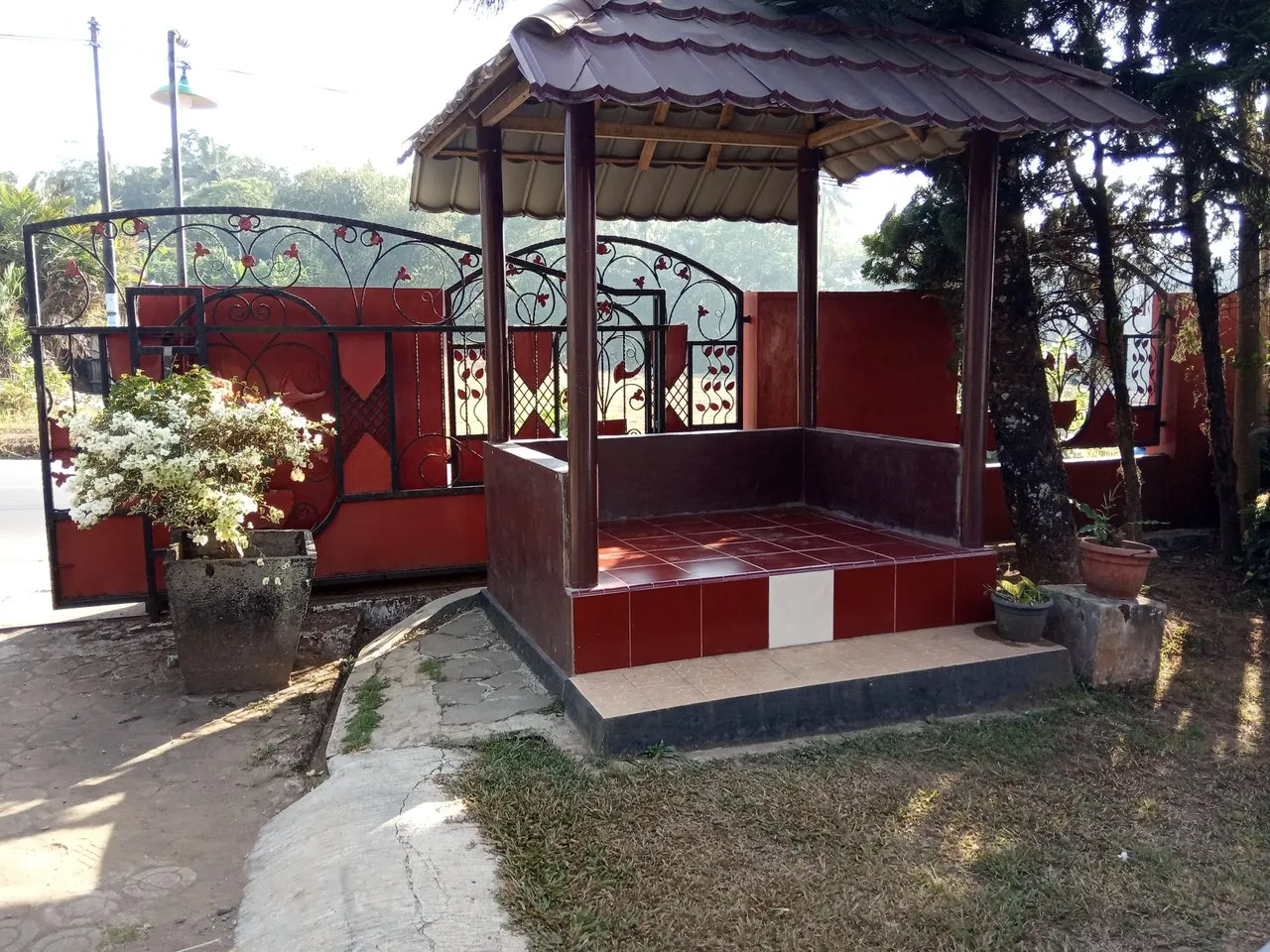
Often there are not many choices on where to build a house, but there are many ways to reduce the possibility of problems that arise so that it will make the area of the house better and more comfortable.

A healthy home is a home that is practical, durable, and makes life easier, better, and more economical. It is also important to have a proud home, a house that looks beautiful inside and outside. The two things above can also be combined.
Making your home better does not mean you need more money. In fact, there are many ways to improve your home and quality of life that provide additional natural resources for your garden and livestock, for example fertilizer for fruit trees, water for vegetables, food for animals.
When you build a house or repair an existing home, there are a number of important factors that must be considered.
1. Home Location
Build a house in a good location, think about:
• The possibility of a landslide.
• Possibility of flooding.
• From which direction did strong wind come?
• Where is the nearest water source?
• How much sun?
• Are there shade trees?
2. Reducing Risks There are several things that should be done to reduce risk, such as:
• Stop erosion and reduce the possibility of landslides. Above the location of the house, swales can be made to hold water and soil. For this situation, flow the water slowly to one side, away from the house. This water can then be collected and reused under houses in ponds, banana holes or vegetable gardens. It is very important to keep plants upright protecting the soil and water.
• Reduce flood opportunities. Reforestation or greening of mountains and river cliffs is the best long term solution to reduce the risk of flooding. But sometimes floods will still occur naturally.
• Reduce fire opportunities. Fire will travel faster to the hills with the help of wind. Use methods to break the path of fire if there is a lot of risk due to fire.
• Reduce house damage from strong winds. Don't build on hilltops if possible, and plant windbreak trees.
Community Idea: Disaster Prevention Disaster prevention is a family, community and national issue. River banks and river banks must be protected to reduce the risk of flooding. Trees, bamboo and grass along the river bank will reduce this risk and erosion. Reforestation from community land will also reduce the risk of landslides.
3. According to Climate
There are many climate differences. A house should be designed according to the local climate. The mountain area is very cold at night. Brick, stone or brick is the best material to keep the house warm at night.
Coastal areas are hot areas, so materials such as bamboo, planks and reeds will make much cooler than brick. An open house with a place to live outside will be more comfortable for this area. The windows that open are also very important. However, security issues must be considered as well, so lockable rooms need to be made.
Areas in the middle (between the mountains and the coast) should make a combination in the house, by building warm rooms and also open spaces. All places in the tropics get hot, so shade structures outside the home will provide a lot of comfort for the residence. The trees around the house can improve the surrounding climate by providing shade, reducing wind and cooling the air.
4. Good health and disease prevention
Many diseases can be reduced or prevented by good home design and construction. Likewise with the kitchen.
PROBLEM SOLUTIONS Smoke causes lung and respiratory problems and can cause tuberculosis.
• Good ventilation in the kitchen.
• Chimney (pipe).
• Minimize the production of smoke from the stove / oven.
• Do not use firewood. Mosquitoes cause malaria, dengue fever and many other diseases. They multiply in water.
• Do not allow water to stagnate.
• Cover every tub or bathroom water.
• Install mosquito nets on windows.
• Mosquito nets for sleep.
Diseases can be spread because the area / washing area is dirty.
• A well-built washing area is easy to keep clean. • Quickly drain laundry water.
• A simple filtering system for cleaning laundry water.
Disease can be spread by open and dirty toilets.
• Composting toilets and building toilet rooms that prevent animals and insects from eating / touching human excrement.
• Use the toilet instead of using the river.
• Good WC hygiene.
Rats, dogs, cats, cockroaches, flies and others can spread disease, especially if they eat food and dirt.
• Keep all food protected in its place, thus preventing entry of disease
• Preventing animals from entering the kitchen.
• Build a house that is easy to clean.
• Wash hands before eating.
Moss and moist walls can cause lung infections and respiratory problems.
• Dry the floor and residential area.
• Roof that is not damaged or leaking.
• Keep the rain away from walls.
• Good ventilation.
Burning trash produces smoke which can cause health problems.
• As much as possible to recycle waste.
• Burning trash left over in a special area away from homes and children.
5. A House that is Easy to Clean
A house that is easy to clean will reduce problems and maintain health.
Cement or stone floors will make the floor easier to clean. Corridors or roadways made of small or large stones between kitchens, houses, washing areas and toilets will reduce the risk of disease from dirt and mud.
6. Disposal Management
This includes disposal of food scraps, used water, human waste and urine / urine, plastic, paper, used cans, bottles, smoke, ash, leaves, batteries, old cars and parts parts of motorcycles, old oil, scrap metal and so on. Disposal also includes garbage and pollution that is created when making and distributing something, for example food, plastic toys and so on. Other discharges also occur when using energy, for example smoke from diesel generators. We are involved in it when we buy products and use energy. A well-designed house will reduce the amount of disposal produced. Being responsible for what you buy and use, will benefit the future and help protect the environment.
The following should also be done:
• Reduce the resulting waste.
• Reuse or recycle as much as possible.
• Responsibility for disposal.
Good disposal management is to separate the disposal and turn most of it into useful products, such as:
• Leaves are valuable mulch and fertilizers can be made for plants.
• Food scraps can be used as animal food.
• Used water is flowed into the garden through the ditches.
• Compost washing room waste by distributing it to banana trees.
• Compost toilet waste by turning human waste into fertilizer.
• Firewood ash for compost and liquid compost.
• Plastic boxes for storing seeds / seedlings.
• Drinking water bottles have many uses.
• Tin cans are used as nursery boxes and water cans.
• Paper can be added into compost pits.
• Glass bottles can be cleaned and reused to store honey, oil, palm oil, etc.
• Old tires, cans, broken buckets and so on can be used in nurseries for seed boxes or flower pots.
• And many other examples.
Poor disposal management is burning everything, letting animals eat human waste and allowing water that has been used to overflow and flood in the ground. Even worse disposal management is dumping rubbish in the river. This creates pollution in rivers and the sea and causes big problems in the future. It also looks ugly and damages the beauty of the environment.
Burning trash
Some disposal will still be burned. If garbage, especially plastic, is burned quickly at high heat, it will produce less smoke and this is better for humans and the environment. Making a circle of stones around the area of combustion will provide a place where garbage can be burned properly. Put garbage in plastic bags and dispose of it in the burning area until everything can burn at once. This creates high temperatures and reduces smoke and pollution.
This kiln should:
• Cover the top and make sure everything is on fire. This is also to prevent dogs from entering.
• Allow gaps to let air in to help accelerate combustion at high temperatures.
• Made a little away from home, and also make sure the wind direction so that smoke is not blown into our homes and neighbors.
Do not let children stand near the smoke and breathe it. It is poisonous!
Community and Government Ideas
Immediately build disposal sites in each village or district. This will greatly improve disposal management, especially those from cities. But the first thing to do is to separate and recycle as much as possible, then the rest is taken to landfills. Examples of recycling include:
• Using old tires to make earth terraces. Use in the same way as rocks in making swales / terraces. Trees can be planted under or even inside used tires.
• Make compost from all leaves, dirt, etc.
In villages and small communities, for garbage burned, a community burning area can be created to reduce smoke and environmental problems. It is made of large rocks or rocks, same as for families, but wider. Make a circle about 2m in diameter and 1m high.
It is important for governments and communities to think about the future and start taking action to create a shelter and recycling. This attention is more focused on rubbish such as:
• Disposal of toxic substances, such as: used car oil, batteries, tires, hospital waste.
• Glass bottles, cans.
• Metal / iron scraps.
• Plastic.
Recycling of this material will gradually replace combustion. But remember that the best way to overcome disposal is not to create it! Use more natural local ingredients instead, whenever and whenever possible.